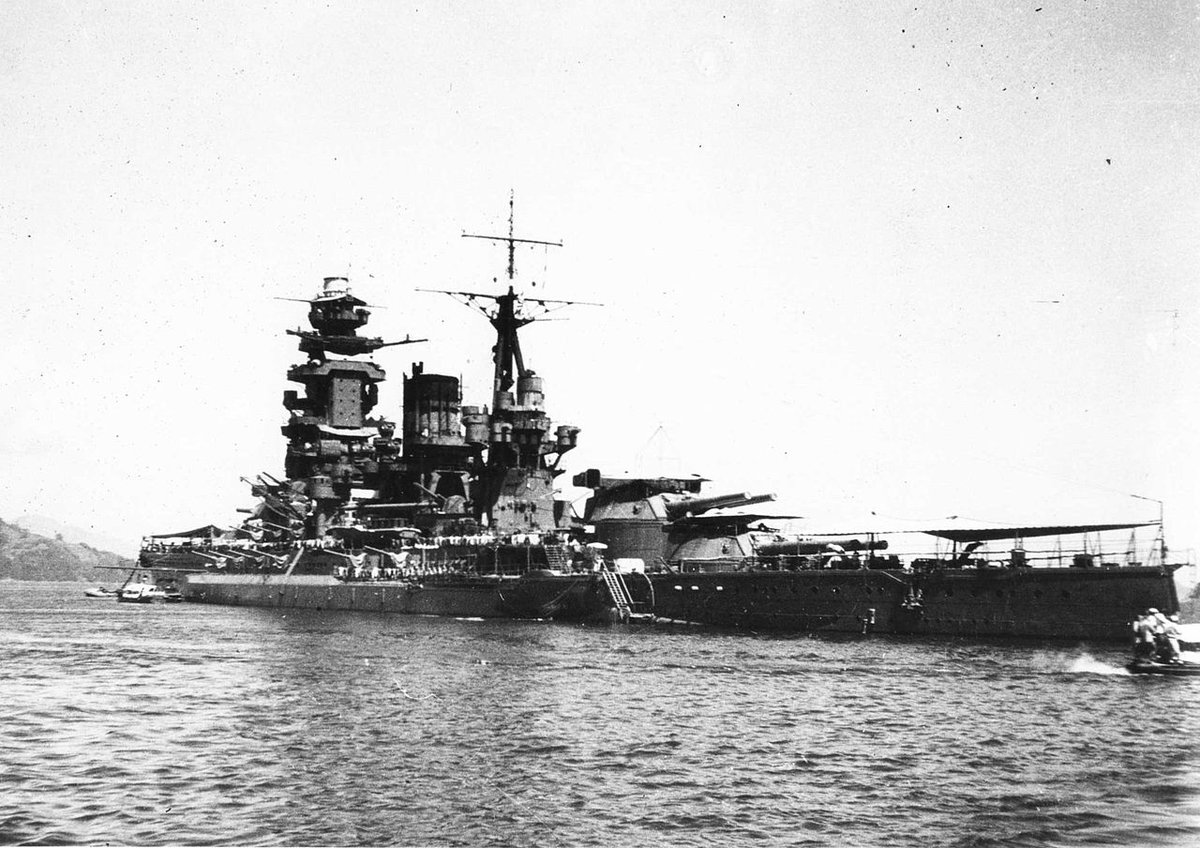The battleship Mustu at anchor. Her extensive bulges, the result of her 1930s modernization, are prominent.
A lot of people are surprised by just how large the Nagato class grew to be over their careers.
A lot of people are surprised by just how large the Nagato class grew to be over their careers.

At the start of their careers, the Nagato class were 215m (708') long with a beam of 29m (95'3"). At a draught of 9m (29'), this gave them a displacement of 32,200 tons (38,498 tons at full load). 



In 1927, Mutsu had a modified bow fitted that increased their length by 1.6 meters (about 5' 3") to make the forward deck more dry. Nagato received a similar modification in 1930. 

Their size was further enlarged during their comprehensive 1930s modernizations.
The Nagato class had their Hulls extended at the stern, increasing their length by another 7.55m (24' 8").
The Nagato class had their Hulls extended at the stern, increasing their length by another 7.55m (24' 8").

Beam was also increased through the fitting of large anti-torpedo bulges. This increased the beam by 2.4m (about 8').
The fitting of new weapons and equipment caused the draft to increase as well. At their heaviest, the Nagato class had a new draft of 9.49m (31' 2").
The fitting of new weapons and equipment caused the draft to increase as well. At their heaviest, the Nagato class had a new draft of 9.49m (31' 2").

This led to an impressive increase in draft (almost 7,000 tons).
The Nagato class battleships were now 225m long (738') with a beam of 34.6m (113' 6").
Their new displacement was 39,050 tons standard, swelling to 46,000 tons at full load.
The Nagato class battleships were now 225m long (738') with a beam of 34.6m (113' 6").
Their new displacement was 39,050 tons standard, swelling to 46,000 tons at full load.

This actually placed them within the upper echelon of dreadnoughts in terms of size. At their heaviest, they rivaled designs such as the more modern North Carolina (46,700 tons) and King George V (45,400 tons) classes. 

The Yamato class might get all the glory, but the Japanese Navy had some other hefty girls in service too!
#Japan #History #WW2 #inflation #ThursdayThoughts #thursdayvibes
#Japan #History #WW2 #inflation #ThursdayThoughts #thursdayvibes

@threadreaderapp unroll
• • •
Missing some Tweet in this thread? You can try to
force a refresh






















